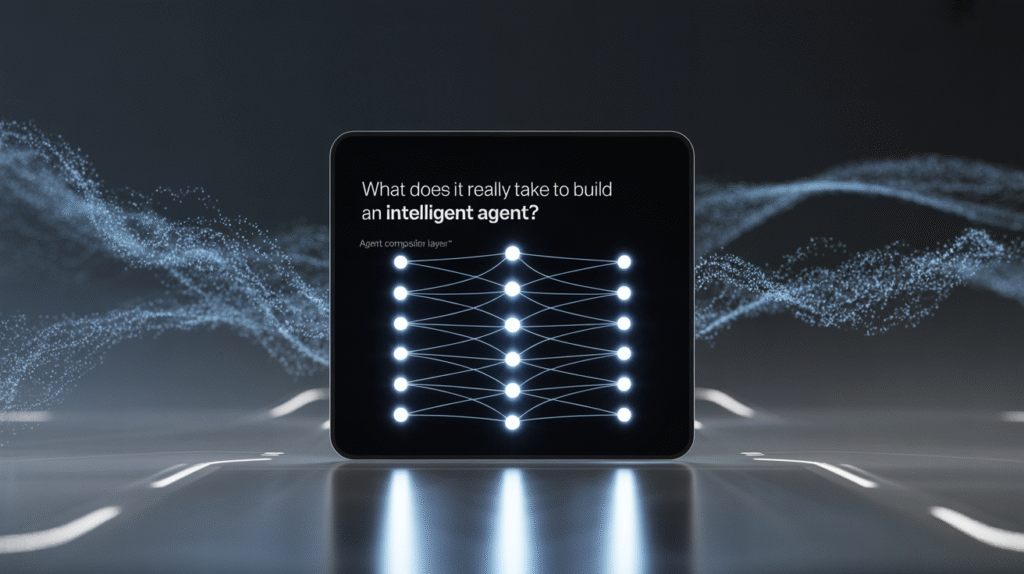Building an intelligent agent goes far beyond clever prompt engineering for language models. To create real-world, autonomous AI systems that can think, reason, act, and learn, you need to engineer a full-stack solution that orchestrates multiple tightly–integrated components. The following seven-layer framework is a battle-tested mental model for anyone serious about AI agent development—whether you’re a founder, AI engineer, or product leader.
1. Experience Layer — The Human Interface
The Experience Layer acts as the touchpoint between humans and the agent. It defines how users interact with the system: conversation (chat/web/app), voice, image, or even multimodal engagement. This layer must be intuitive, accessible, and capable of capturing user intent precisely, while providing clear feedback.
- Core design challenge: Translate ambiguous human goals into machine-understandable objectives.
- Example: A customer support chatbot interface, or a voice assistant in a smart home.
2. Discovery Layer — Information Gathering & Context
Agents need to orient themselves: knowing what to ask, where to look, and how to gather relevant information. The Discovery Layer encompasses techniques like web search, document retrieval, data mining, context collection, sensor integration, and interaction history analysis.
- Core design challenge: Efficient, reliable, and context-aware information retrieval that surfaces only what matters.
- Example: Fetching product manuals, extracting knowledge bases, or summarizing recent emails.
3. Agent Composition Layer — Structure, Goals, and Behaviors
This layer defines what the agent is and how it should behave. It includes defining the agent’s goals, its modular architecture (sub-agents, policies, roles), possible actions, ethical boundaries, and configurable behaviors.
- Core design challenge: Enabling customization and extensibility while ensuring coherence and alignment with user and business objectives.
- Example: Setting up a sales assistant agent with negotiation tactics, brand voice, and escalation protocols.
4. Reasoning & Planning Layer — The Agent’s Brain
At the heart of autonomy, the Reasoning & Planning Layer handles logic, decision-making, inference, and action sequencing. Here, the agent evaluates information, weighs alternatives, plans steps, and adapts strategies. This layer can leverage symbolic reasoning engines, LLMs, classical AI planners, or hybrids.
- Core design challenge: Moving beyond pattern-matching to true adaptive intelligence.
- Example: Prioritizing customer queries, scheduling multi-step workflows, or generating argument chains.
5. Tool & API Layer — Acting in the World
This layer enables the agent to perform real actions: executing code, triggering APIs, controlling IoT devices, managing files, or running external workflows. The agent must safely interface with digital and (sometimes) physical systems, often requiring robust error handling, authentication, and permissions management.
- Core design challenge: Safe, reliable, and flexible action-taking with external systems.
- Example: Booking a meeting on your calendar, placing an e-commerce order, or running data analysis scripts.
6. Memory & Feedback Layer — Contextual Recall & Learning
Agents that learn and improve over time must maintain memory: tracking prior interactions, storing context, and incorporating user feedback. This layer supports both short-term contextual recall (for conversation) and long-term learning (improving models, policies, or knowledge bases).
- Core design challenge: Scalable memory representation and effective feedback integration.
- Example: Remembering user preferences, learning common support issues, or iteratively refining suggestions.
7. Infrastructure Layer — Scaling, Orchestration, & Security
Beneath the application stack, robust infrastructure ensures the agent is available, responsive, scalable, and secure. This layer includes orchestration platforms, distributed compute, monitoring, failover, and compliance safeguards.
- Core design challenge: Reliability and robustness at scale.
- Example: Managing thousands of concurrent agent instances with uptime guarantees and secure API gateways.
Key Takeaways
- True autonomy requires more than language understanding.
- Integrate all 7 layers for agents that can safely sense, plan, act, learn, and scale.
- Adopt this framework to assess, design, and build next-generation AI systems that solve meaningful problems.
Feel free to check out our GitHub Page for Tutorials, Codes and Notebooks. Also, feel free to follow us on Twitter and don’t forget to join our 100k+ ML SubReddit and Subscribe to our Newsletter.



